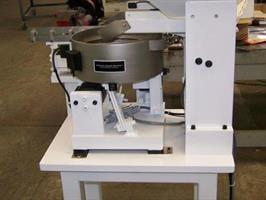The cost of doing business always seems to be on the rise. Fixed costs are never quite “fixed” and variable costs shift as soon as you get them under control. Without careful assessment, your manufacturing and assembly costs can become burdensome. A new feeder system, however, can help you to reduce costs.
Here’s how:
- Cut Down on Manpower – Efficient feeder systems require fewer operators. The less people you employ, the more you can reduce expenses like insurance and other benefits. The value of automation can’t be discounted.
- Higher Output Rates – Efficient feeder systems with higher output rates translates into more products hitting the market, faster. The more you have to sell, the more money you can make to offset other expenses.
- Higher Reliability – Systems with poor reliability can quickly put your production schedule in the red. A new, reliable feeder system means less potential down time and more production opportunity.
- Faster Processes – You may have a current process that works well – but maybe it could go even faster. A new feeder system increases the ability to maximize output.
- Simplified Processes – Perhaps an older feeder system has since been assessed and new efficiencies uncovered. A new feeder system can simplify complex processes while increasing output efficiencies.
 Smaller Footprint – Hoosier Feeder Company’s experience and technology enables us to reduce the size of existing feeder systems, which can free up more manufacturing space for your facility. Warehouse space traditionally allotted for one system may be large enough for two.
Smaller Footprint – Hoosier Feeder Company’s experience and technology enables us to reduce the size of existing feeder systems, which can free up more manufacturing space for your facility. Warehouse space traditionally allotted for one system may be large enough for two.- Adaptable Systems – You may have older feeder systems that are designed exclusively for unique parts. You be able to implement a new feeder system that feeds multiple parts through one system, increasing output.
- Faster Changeovers – Older feeder systems can be less flexible. A new feeder system may allow you to change between parts and increase the value of the solution.
- Positive Location Changeover – Location can have a detrimental effect on tooling. A new feeder system in a more positive location can boost the results of eventual tooling.
- Reduce Scrap – Possibly the biggest advantage of a new feeder system is the reduction in scrap from obsolete processes and equipment. More parts are fed properly, which means improved efficiency.
Are you searching for ways to reduce your manufacturing and assembly costs? Click here to connect with us today to learn how a new feeder system can help.
January 30, 2017
Related Topics: Vibratory Feeders